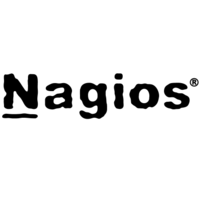Need advice about which tool to choose?Ask the StackShare community!
Kibana vs Nagios: What are the differences?
Key Differences Between Kibana and Nagios
Kibana and Nagios are two popular tools used for monitoring and visualization in the IT industry. While they share some similarities, there are significant differences between the two. Here are the key differences between Kibana and Nagios:
Data Visualization Capabilities: Kibana is primarily designed for data visualization and analysis. It provides interactive and customizable dashboards, charts, graphs, and maps to visualize data stored in Elasticsearch. On the other hand, Nagios focuses more on monitoring and alerting, and it lacks advanced data visualization features.
Technological Focus: Kibana is part of the Elastic Stack, which includes Elasticsearch, Logstash, and Beats. It is built on Elasticsearch, a distributed search and analytics engine. Kibana's focus is on handling and visualizing Elasticsearch data. In contrast, Nagios is focused on monitoring various IT infrastructure components, including servers, network devices, applications, and services.
Alerting Capabilities: Nagios is known for its powerful alerting capabilities. It can send notifications and alerts via various channels such as emails, SMS, and custom scripts when specific events or issues occur. Kibana, on the other hand, does not have native alerting functionality. However, it can be integrated with other tools, such as Elasticsearch Watcher, to achieve similar alerting capabilities.
Ease of Use: Kibana offers a user-friendly and intuitive interface that allows users to interact with data and create visualizations without much technical knowledge. It provides a drag-and-drop interface and pre-built visualization options. Nagios, while powerful, has a steeper learning curve and requires more technical expertise to set up and configure.
Scalability: Kibana is highly scalable and can handle large amounts of data. It can be easily deployed in a distributed manner to handle high volumes of data and provide performance optimizations. Nagios, while scalable to some extent, may face challenges when monitoring large-scale environments with thousands of hosts and services.
Community and Ecosystem: Both Kibana and Nagios have active communities and support from a wide range of users. However, Kibana benefits from being part of the Elastic Stack, which has a vast ecosystem, extensive documentation, and a vibrant community. Nagios also has a dedicated community, but it may have a narrower focus compared to the broader ecosystem of Elastic Stack.
In summary, Kibana is a powerful data visualization tool optimized for Elasticsearch, while Nagios is a versatile monitoring tool with robust alerting capabilities. Kibana offers advanced data visualization and analytics features, focusing on Elasticsearch data, while Nagios excels in monitoring various IT infrastructure components.
From a StackShare Community member: “We need better analytics & insights into our Elasticsearch cluster. Grafana, which ships with advanced support for Elasticsearch, looks great but isn’t officially supported/endorsed by Elastic. Kibana, on the other hand, is made and supported by Elastic. I’m wondering what people suggest in this situation."
For our Predictive Analytics platform, we have used both Grafana and Kibana
- Grafana based demo video: https://www.youtube.com/watch?v=tdTB2AcU4Sg
- Kibana based reporting screenshot: https://imgur.com/vuVvZKN
Kibana has predictions and ML algorithms support, so if you need them, you may be better off with Kibana . The multi-variate analysis features it provide are very unique (not available in Grafana).
For everything else, definitely Grafana . Especially the number of supported data sources, and plugins clearly makes Grafana a winner (in just visualization and reporting sense). Creating your own plugin is also very easy. The top pros of Grafana (which it does better than Kibana ) are:
- Creating and organizing visualization panels
- Templating the panels on dashboards for repetetive tasks
- Realtime monitoring, filtering of charts based on conditions and variables
- Export / Import in JSON format (that allows you to version and save your dashboard as part of git)
I use both Kibana and Grafana on my workplace: Kibana for logging and Grafana for monitoring. Since you already work with Elasticsearch, I think Kibana is the safest choice in terms of ease of use and variety of messages it can manage, while Grafana has still (in my opinion) a strong link to metrics
After looking for a way to monitor or at least get a better overview of our infrastructure, we found out that Grafana (which I previously only used in ELK stacks) has a plugin available to fully integrate with Amazon CloudWatch . Which makes it way better for our use-case than the offer of the different competitors (most of them are even paid). There is also a CloudFlare plugin available, the platform we use to serve our DNS requests. Although we are a big fan of https://smashing.github.io/ (previously dashing), for now we are starting with Grafana .
I use Kibana because it ships with the ELK stack. I don't find it as powerful as Splunk however it is light years above grepping through log files. We previously used Grafana but found it to be annoying to maintain a separate tool outside of the ELK stack. We were able to get everything we needed from Kibana.
Kibana should be sufficient in this architecture for decent analytics, if stronger metrics is needed then combine with Grafana. Datadog also offers nice overview but there's no need for it in this case unless you need more monitoring and alerting (and more technicalities).
@Kibana, of course, because @Grafana looks like amateur sort of solution, crammed with query builder grouping aggregates, but in essence, as recommended by CERN - KIbana is the corporate (startup vectored) decision.
Furthermore, @Kibana comes with complexity adhering ELK stack, whereas @InfluxDB + @Grafana & co. recently have become sophisticated development conglomerate instead of advancing towards a understandable installation step by step inheritance.
The objective of this work was to develop a system to monitor the materials of a production line using IoT technology. Currently, the process of monitoring and replacing parts depends on manual services. For this, load cells, microcontroller, Broker MQTT, Telegraf, InfluxDB, and Grafana were used. It was implemented in a workflow that had the function of collecting sensor data, storing it in a database, and visualizing it in the form of weight and quantity. With these developed solutions, he hopes to contribute to the logistics area, in the replacement and control of materials.
- free open source
- modern interface and architecture
- large community
- extendable I knew Nagios for decades but it was really outdated (by its architecture) at some point. That's why Icinga started first as a fork, not with Icinga2 it is completely built from scratch but backward-compatible with Nagios plugins. Now it has reached a state with which I am confident.
Pros of Kibana
- Easy to setup88
- Free64
- Can search text45
- Has pie chart21
- X-axis is not restricted to timestamp13
- Easy queries and is a good way to view logs9
- Supports Plugins6
- Dev Tools4
- Can build dashboards3
- More "user-friendly"3
- Out-of-Box Dashboards/Analytics for Metrics/Heartbeat2
- Easy to drill-down2
- Up and running1
Pros of Nagios
- It just works53
- The standard28
- Customizable12
- The Most flexible monitoring system8
- Huge stack of free checks/plugins to choose from1
Sign up to add or upvote prosMake informed product decisions
Cons of Kibana
- Unintuituve6
- Elasticsearch is huge4
- Hardweight UI3
- Works on top of elastic only3
















































